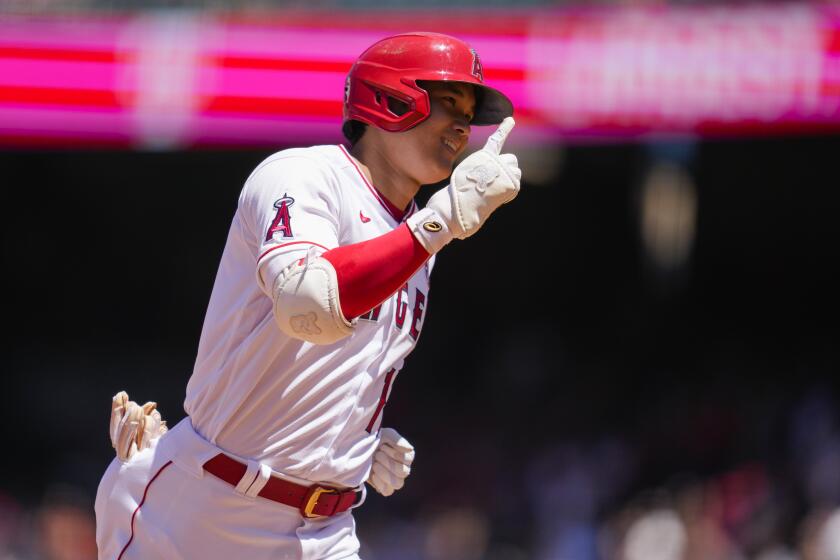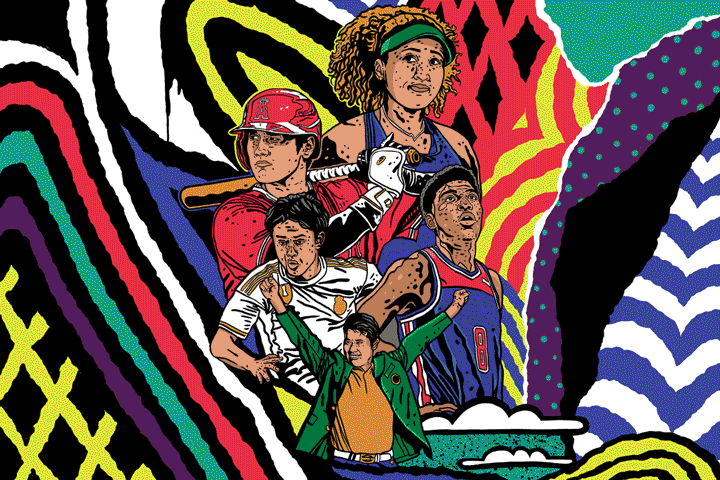
Nearly two decades after Hideo Nomo pitched in the major leagues for the first time, a high school senior in the northern part of Japan’s mainland wrote in colored markers his annual goals for the next 50-plus years.
In the chart, Shohei Ohtani included a wedding, the birth of two sons and a daughter, and coaching a team to a Little League national championship. What was most striking about the document wasn’t the borderline-comical specificity of his plans outside of baseball, but how he wanted his career to play out.
Ohtani never pictured himself playing in Japan. He wanted to play in the United States and only in the United States, detailing his ambitions to sign with a major league organization at 18 and win multiple Cy Young Awards and World Series championships before retiring at 40.
This week, Ohtani will be the main attraction of Major League Baseball’s All-Star festivities, which will mark the unofficial halfway point of what could wind up being the greatest individual season of the last century, if not of all-time. The Angels’ two-way star will headline the Home Run Derby on Monday and perform double duty for the American League as a designated hitter and pitcher in the game on Tuesday.
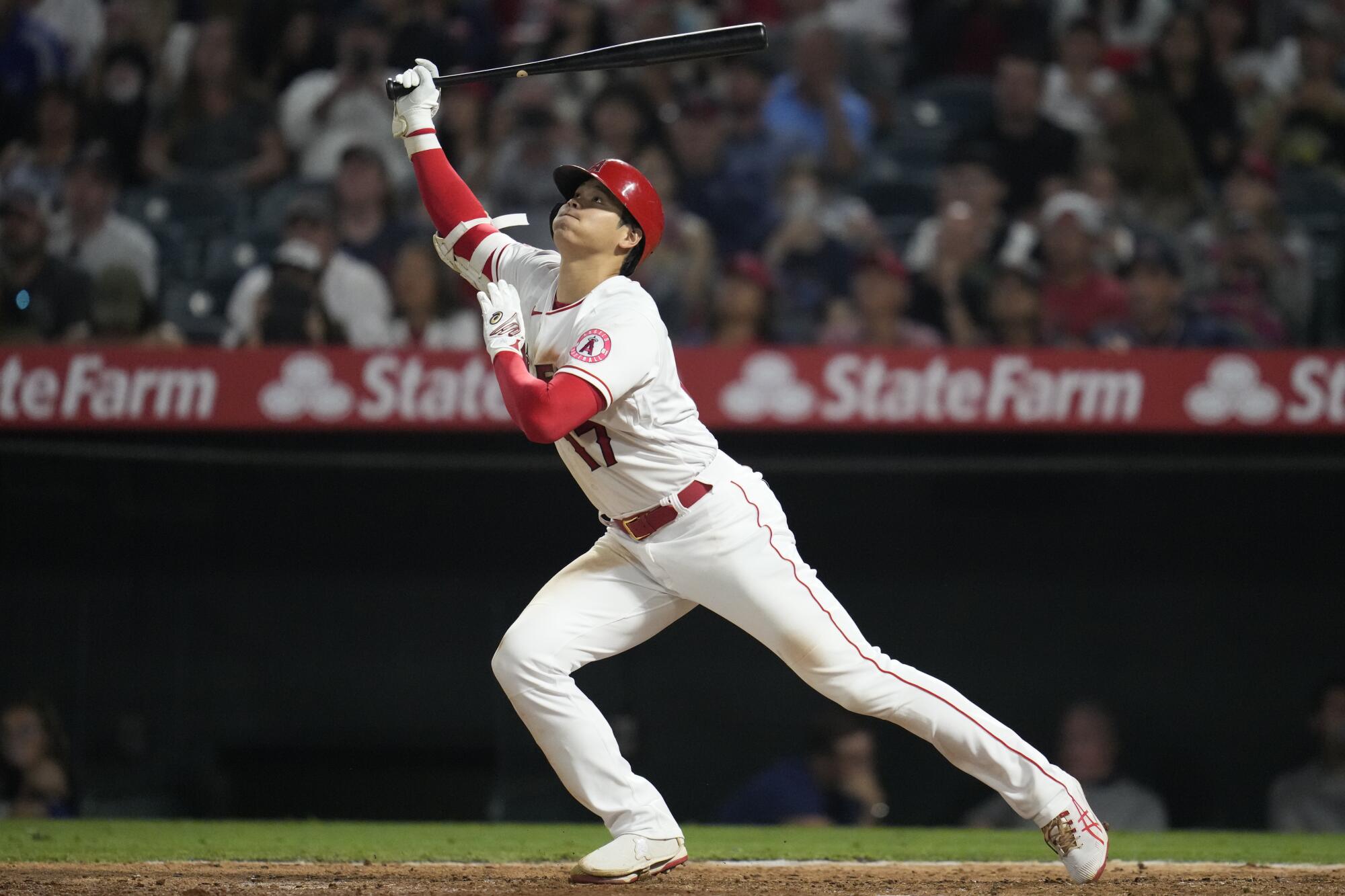
As he envisioned, the world has become his stage.
An entire generation of athletes from his homeland shared his ambition of global domination. Now, with Tokyo about to stage the Olympics, Japan is at the dawn of a golden age in sports.
Naomi Osaka is the most marketable female tennis player in the world, her profile as a four-time Grand Slam tournament winner further elevated by her social justice and mental health advocacy.
Golfer Hideki Matsuyama won the most recent Masters tournament. Bantamweight boxing champion Naoya Inoue is No. 2 in Ring Magazine’s pound-for-pound rankings. Two-time Olympic gold medalist Yuzuru Hanyu is considered the greatest figure skater of all time. Rui Hachimura was a first-round pick in the NBA draft and is a starter for the Washington Wizards. The Japanese men’s and women’s soccer teams fancy themselves as medals contenders at the Tokyo Games.
“To want to try to play at the highest level possible,” Ohtani said in Japanese recently, “is normal, I think.”
That wasn’t always the case.
Shohei Ohtani’s cartoon-like feats for the Angels have stunned the baseball world, but it’s very similar to the comic book world that influenced him.
In earlier times, the country’s sports culture was considerably more insular, with athletes striving to be “Nihon ichi” — or No. 1 in Japan. Remnants of this inward-looking mindset remain in the Japanese language. For example, the term “pro yakyu,” which literally translates to professional baseball, is understood to refer to the Japanese league.
So, what changed?
The doors to the world, naturally, were opened by the world’s game.
Before there was Nomo, there were soccer players Yasuhiko Okudera and Kazuyoshi Miura.
Okudera played for Koln and Werder Bremen in Germany’s Bundesliga from the late-1970s to mid-1980s. But the player most responsible for popularizing the sport in Japan was Miura, a striker in the 1990s famous for his Samba-dance goal celebrations.
While Japan was in the early stages of a soccer boom, Miura was the leading scorer of a national team denied a place in the 1994 World Cup by an extra-time goal in the final qualifying match against Iraq. (The 3-3 draw came to be known as “The Tragedy of Doha” and has become a cornerstone of Japanese soccer folklore.) Still wanting to compete against the world’s best, Miura departed the newly formed J-League and moved to Genoa of Italy’s Serie A on a loan deal in 1994, a year before Nomo signed with the Dodgers. Miura scored only once in 21 matches, but his Italian experiment created an opening for a new wave of more technically adept players.
(Incredibly, Miura is still playing for Yokohama FC at 54, making him the oldest active player in the world.)
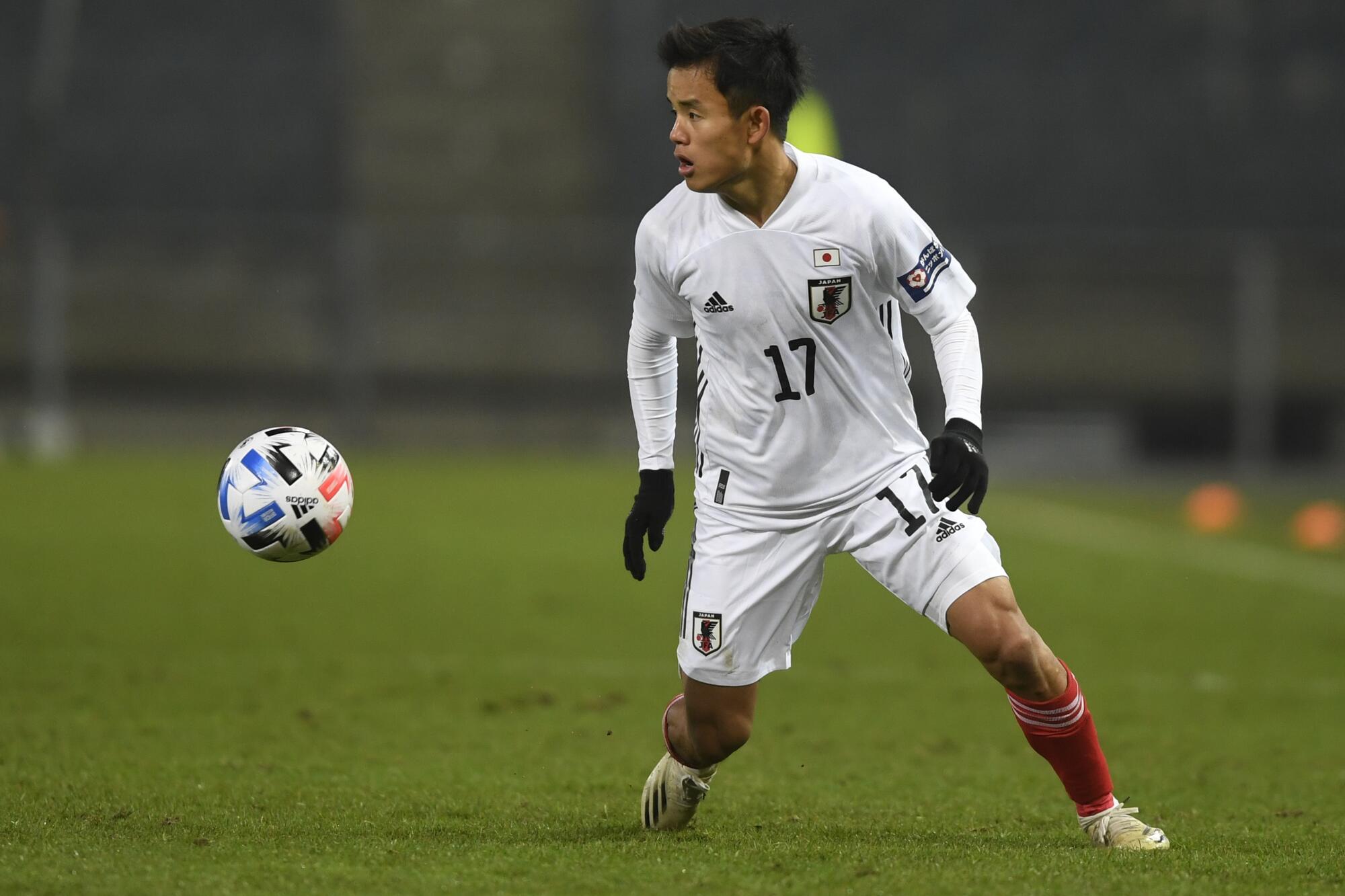
Japan has specialized in exporting attacking midfielders over the last couple of decades, including several who played major roles on top clubs: Hidetoshi Nakata (Roma of Italy), Shunsuke Nakamura (Celtic of Scotland), Shinji Kagawa (Manchester United of England) and Keisuke Honda (AC Milan of Italy).
Takefusa Kubo, 20, could be the most gifted of them all. Whereas his predecessors were products of Japan’s player-development system, Kubo spent his formative years in Barcelona’s youth academy.
Like the player he is nicknamed after, “Japanese Messi” is a diminutive left-footed dribbling wizard. Kubo became ineligible to play for Barcelona when the team was found to have violated transfer rules for underage players, prompting him to return to Japan and make his professional debut at 15 with FC Tokyo. He returned to Spain when he turned 18, this time with Real Madrid, which loaned him to Mallorca, Villarreal and Getafe over the last two seasons.
With Kubo and Germany-based Ritsu Doan on the roster of the under-24 national team that will compete in the Olympics, Japan is hopeful of capturing its first medal in men’s soccer since it won bronze at the 1968 Games in Mexico City.
Similar to how Kubo felt it was necessary to immerse himself in the most competitive environment possible, figure skater Hanyu shifted his base of operations to Canada to work with coach Brian Orser to prepare for the 2014 Winter Olympics. Hanyu was rewarded with his first gold medal and he won again four years later.
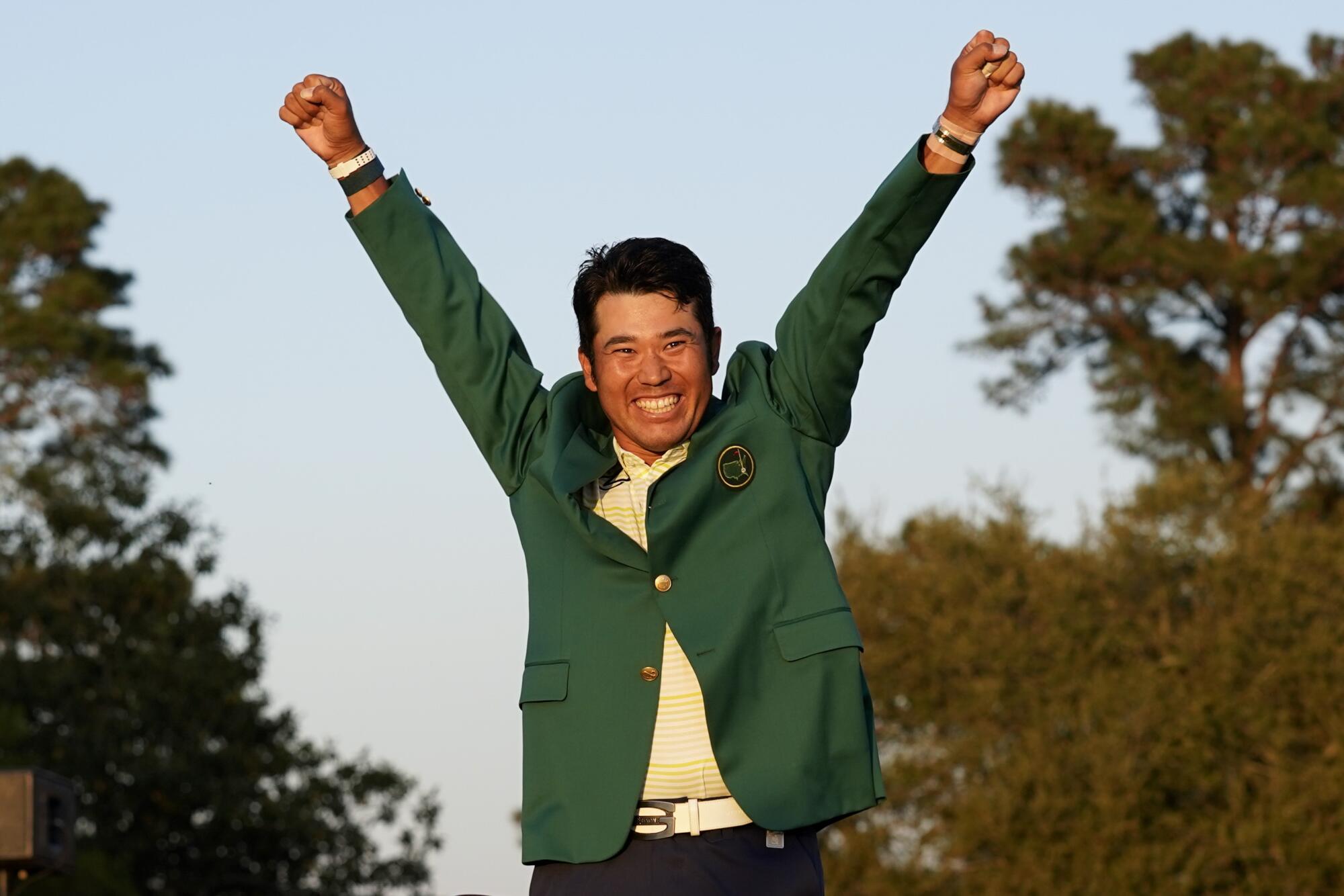
Golfers were reluctant to make similar commitments because they were able to earn comfortable livings on the Japan Tour, which has the largest prize fund of any regular tour outside of the PGA and European Tours.
Isao Aoki, who finished second to Jack Nicklaus in the 1980 U.S. Open, played the majority of the career in his homeland. So did Jumbo Ozaki.
Matsuyama opted for a more ambitious approach, playing full-time on the PGA Tour. His gamble produced a breakthrough, as he became the first Japanese male golfer to win a major tournament when he triumphed at the Masters in April.
In the wake of his history-making victory, Matsuyama thought his success could lead to others following his example.
“In baseball right now, there are players like [Yu] Darvish, Kenta Maeda and Ohtani,” Matsuyama said in Japanese. “But in golf, it’s just me. But if I can continue to perform well and deliver that news to Japan, I think there will be more people who will strive for me and come over.”
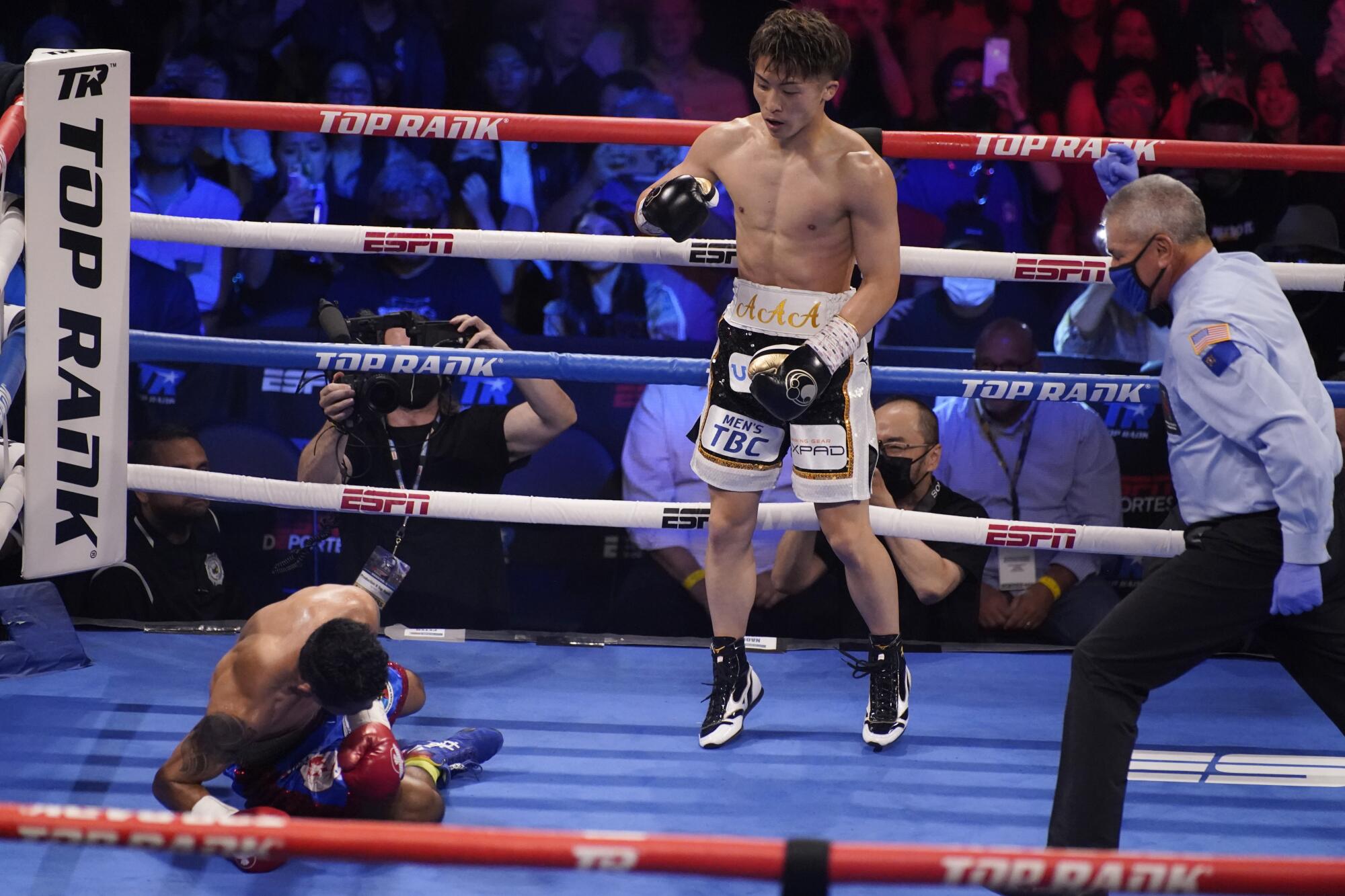
As is the case in golf, most high-level Japanese boxers choose to compete at home. In boxing, there is even less of an incentive to leave the country.
A championship boxing match can take place anywhere. Muhammad Ali knocked out George Foreman in Zaire. Ali defeated Joe Frazier in the Philippines.
In his last fight in Japan, Inoue packed the 22,000-seat Super Arena in Saitama. However, the knockout artist has insisted on fighting in Las Vegas, once in an empty arena during the pandemic and against last month in a modest 4,500-seat theater.
“The image I have is that it’s the center of boxing,” Inoue said earlier this year.
Inoue understands that, fair or not, if he wants to be acknowledged as a legitimately great boxer, he has to win major fights here. Nicaraguan Román González, who was arguably the greatest fighter of the last decade, fought many of his early fights in Japan. He won multiple world championships there, but his talents weren’t properly recognized until he started fighting regularly in the United States.
While athletes’ perspectives have expanded, the general population’s has too, with the largely monoethnic society slowly broadening what it means to be Japanese.
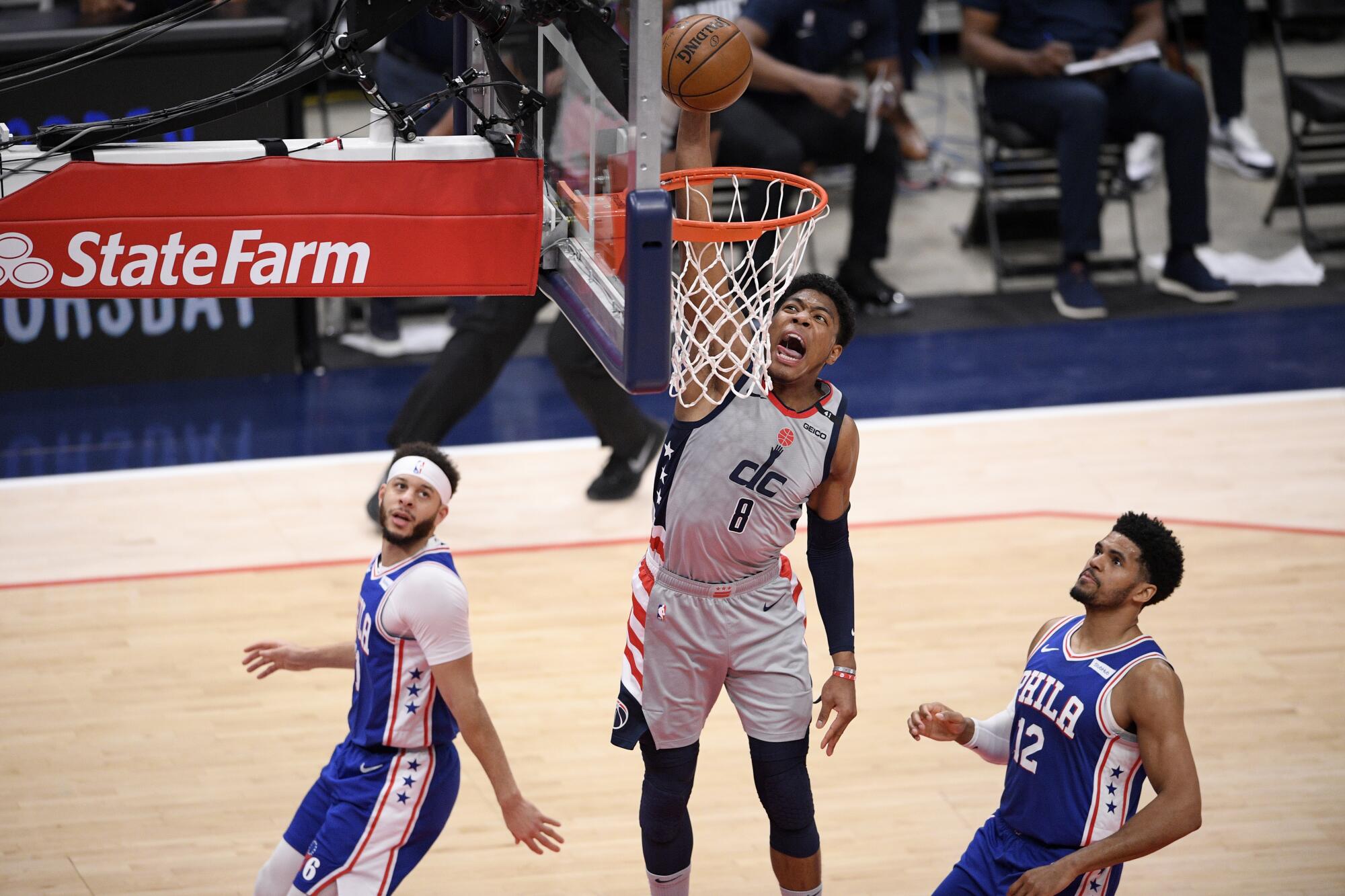
As a symbol of this theoretically more inclusive environment, Hachimura was chosen as one of the country’s flag bearers for the opening ceremony of the Olympics. Hachimura, who stands 6 feet 8 and averaged nearly 14 points per game over his first two NBA seasons, is what the Japanese call a “hafu” — a mixed-race person. He has a Beninese father and Japanese mother.
At least one parent of about one in 30 children born in Japan today is a foreigner, according to the Ministry of Health, Labour and Welfare. This has started to be reflected in sports. Darvish, a pitcher for the San Diego Padres, has an Iranian father.
The men’s track and field team is particularly diverse. Abdul Hakim Sani Brown, who will run the 200 meters at the Olympics, is part Ghanaian. Julian Walsh, who will race in the 400 meters, is part Jamaican. Bruno Dede, who will be part of the 400-meter relay team, is part Nigerian.
Complaints of discrimination remain. Earlier this year, Hachimura’s younger brother shared on Twitter an epithet-laced racist message in Japanese that was sent to him.
In response, Hachimura tweeted in Japanese, “Stuff like that comes almost every day.”
Still, Japan as a whole has embraced Hachimura, and he’s become a pitchman for major companies such as SoftBank and noodle manufacturer Nissin.
And the country’s adoration of Osaka would have been unimaginable a couple of decades ago. Osaka’s Japanese mother was at one point disowned by her parents, who disapproved of her relationship with Osaka’s Haitian father.
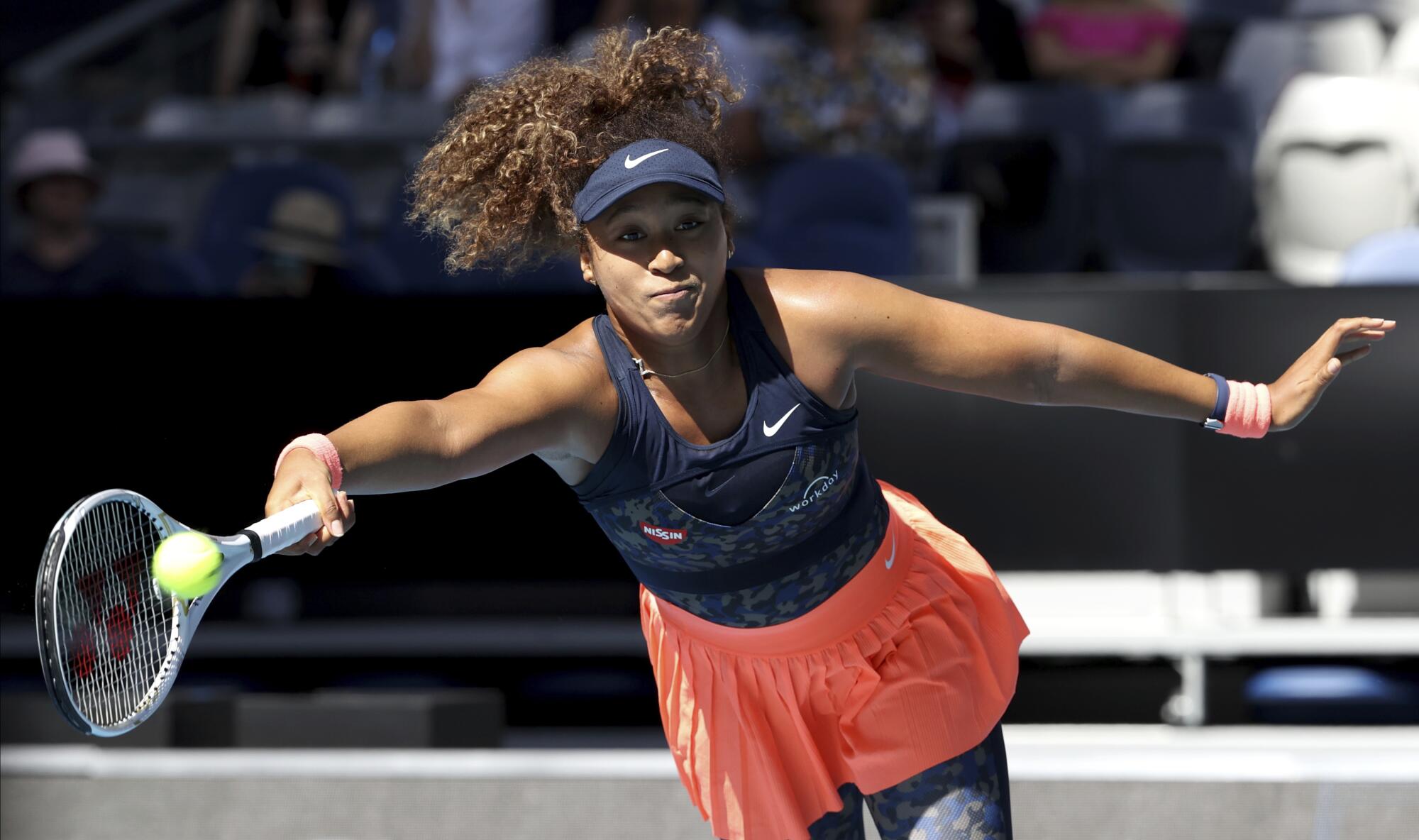
Osaka was born in Japan and will return from a mental-health break to represent the country at the Olympics, but has lived in the United States since she was 3. In news conferences, she fields questions in Japanese but answers them in English.
This once would have been enough to disqualify her from being viewed in Japan as Japanese.
But, well, she wins.
Combine that with her Japanese name and Japanese mannerisms, and it’s enough to make her the world’s highest-earning female tennis player.
Another example of Japan’s selective tolerance is the team that reached the quarterfinals of the 2019 Rugby World Cup, which the nation hosted. Of the team’s 31 players, 16 were foreign-born. They were nonetheless able to ignite a temporary rugby craze.
Much has changed, yet baseball is still the country’s most popular sport. Once threatened by soccer, baseball reaffirmed its place as No. 1 after Japan won the first two editions of the World Baseball Classic.
But the line from Nomo to Ohtani wasn’t particularly straight.
When Nomo signed with the Dodgers after a contract dispute with the Kintetsu Buffaloes, it wasn’t as if boys around Japan suddenly started dreaming of pitching for the Dodgers instead of, say, the Yomiuri Giants.
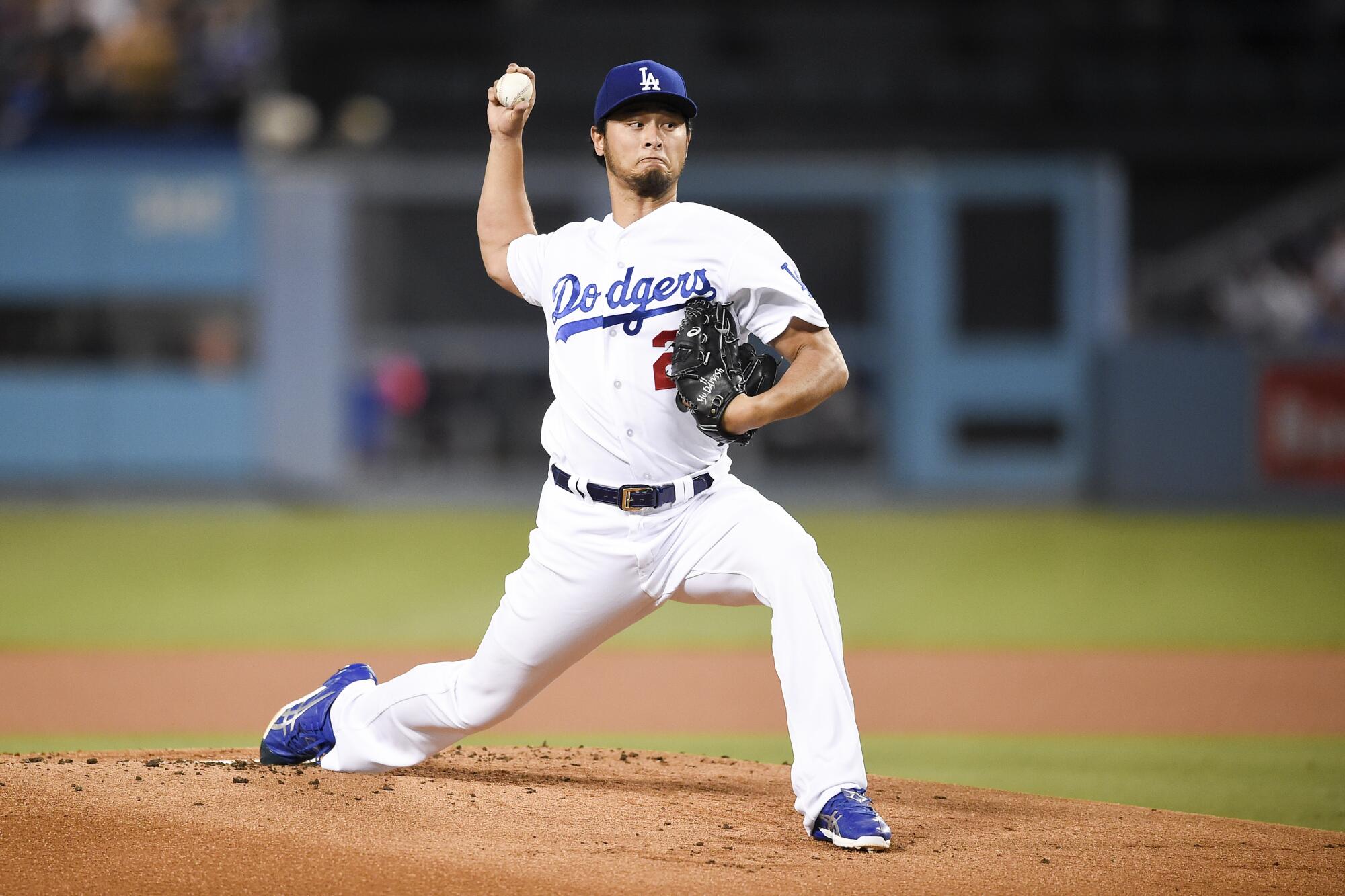
“My goal was to become a professional baseball player in Japan,” Darvish once said.
Darvish was 8 when Nomo made his major league debut. As a high school senior, he rejected offers from major league organizations, including one from the Dodgers. He has described his journey to the United States as something almost out of his control, as his salary escalated to where he all but felt obligated to leave the small-market Hokkaido Nippon-Ham Fighters as a means of offering them payroll relief.
Eventually, however, when high school players started eyeing the major leagues, the country’s baseball establishment wasn’t supportive. Fearing a talent drain, the Japanese league implemented unwritten rules to discourage amateur players from bypassing the draft and signing overseas.
Yusei Kikuchi of the Seattle Mariners was intrigued by the idea of moving to the United States after graduating from Hanamaki Higashi High. Kikuchi was pursued by several major league organizations, including the Dodgers, who had the inside track.
Kikuchi’s high school coach, Hiroshi Sasaki, later admitted he was afraid Nippon Professional Baseball teams would retaliate against him if Kikuchi went directly to MLB. Kikuchi spared him the potential consequences by entering the NPB draft, but cried at the news conference at which he made the announcement.
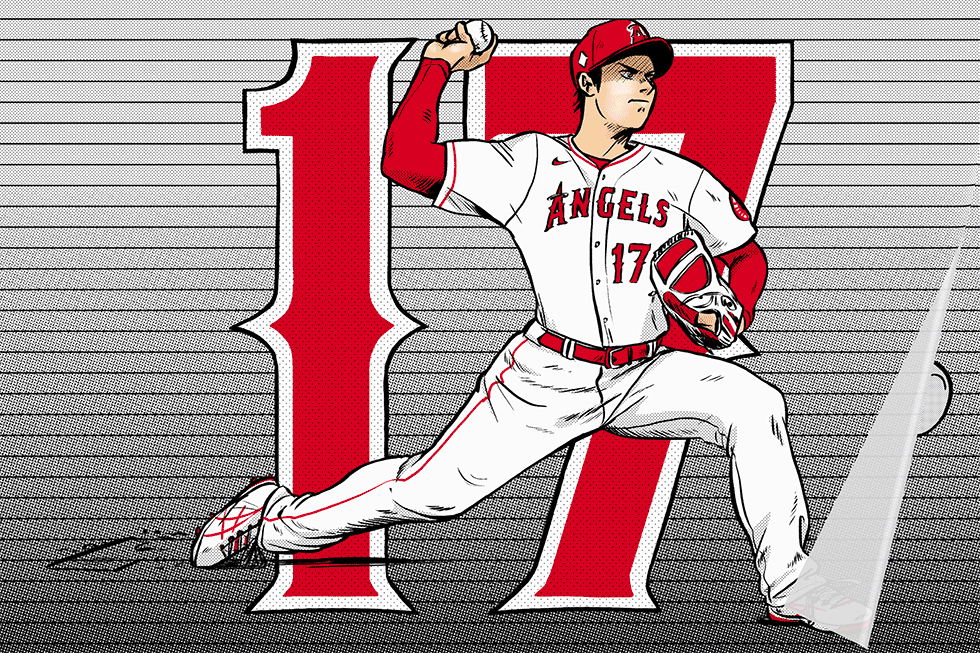
Shohei Ohtani's historic season
“I never told him not to go, but I wonder if my feelings got across to him somehow,” Sasaki said. “I never asked him what he was feeling. I thought I might have prevented him from pursuing his dream and that made me feel guilty.”
So, three years later, when Sasaki was in a similar position advising Ohtani, he encouraged him to follow his heart. Inspired by Ichiro Suzuki and Hideki Matsui, Ohtani was determined to sign with an MLB team, most likely the Dodgers.
Ultimately, the Fighters convinced him to remain in Japan by offering him an opportunity the Dodgers didn’t: to be a two-way player.
He went on to play with the Fighters for five seasons before signing with the Angels.
If the detour delayed him, it also better prepared him from this moment. He’s hitting, he’s pitching and he’s on top of the world.
Shohei Ohtani’s two-way exploits will be among the highlights during the All-Star game and home run derby. Check out The Times’ complete coverage.
More to Read
Go beyond the scoreboard
Get the latest on L.A.'s teams in the daily Sports Report newsletter.
You may occasionally receive promotional content from the Los Angeles Times.


